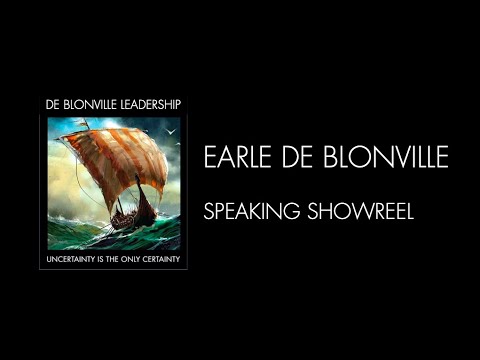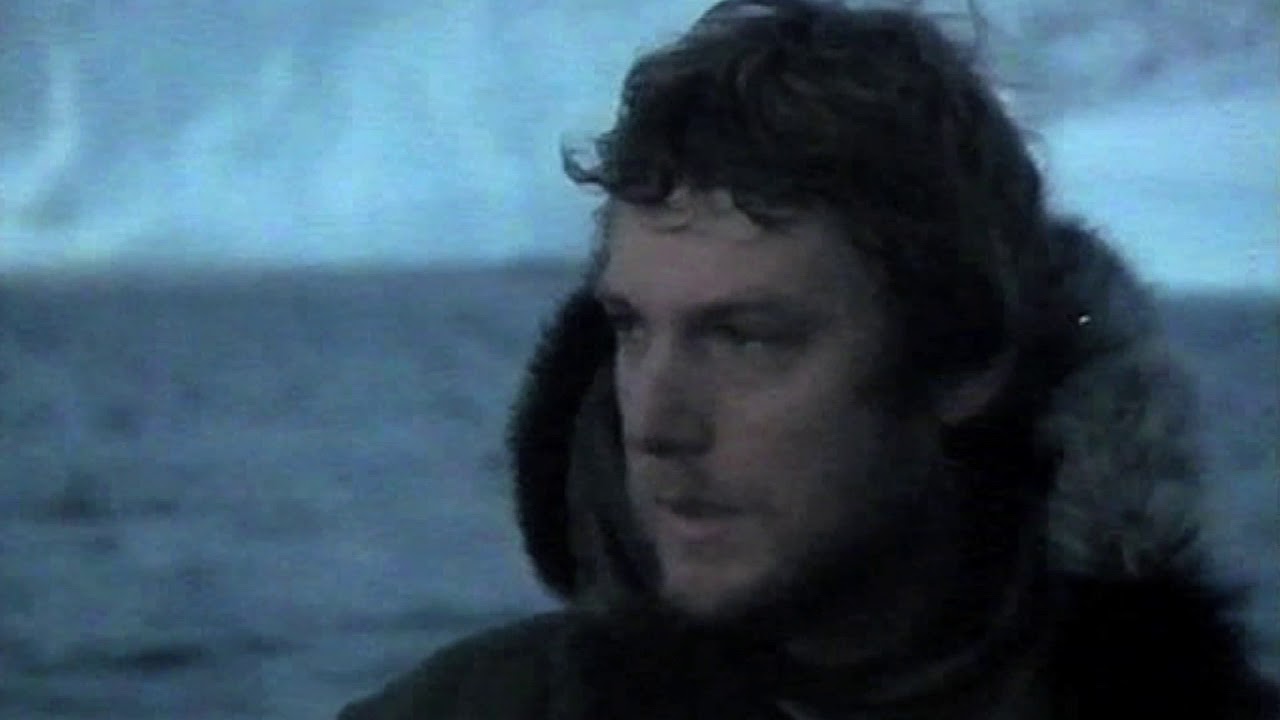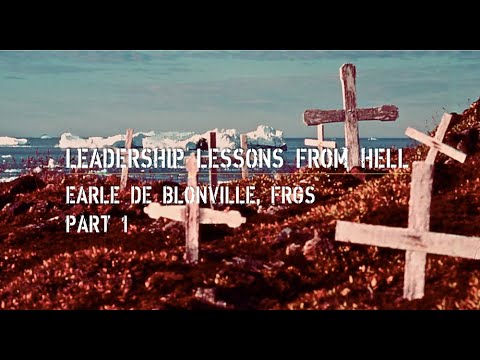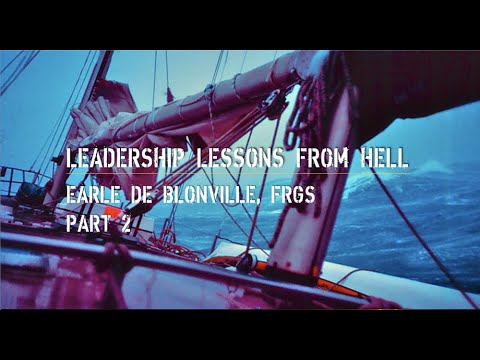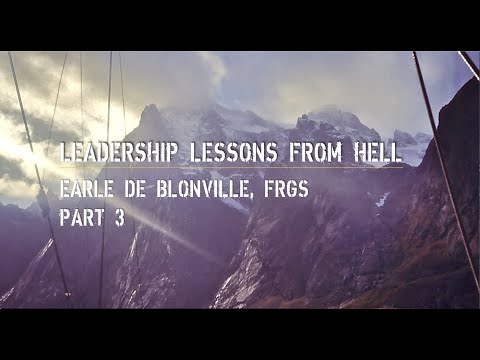You can edit all of this text and replace it with anything you have to say on your blog.
Read MoreWELCOME
“Earle’s remarkably diverse leadership experiences have direct analogies to the workplace"
- COO, World Wide Entertainment
The wilderness teaches us a great deal about taking Leadership in a dramatically changing world.
Earle de Blonville shares his lived experience of grounded, real-world, expedition-tested insights into Leadership Development so that his hard-won experience can help enrich your leadership.
His commitment is to help mid-career and mature professionals with higher purpose to take leadership in the interconnected global challenges created by climate crisis that are already impacting the futures of government, industry, business and society.
“Earle de Blonville is a great, but unsung, Australian hero, with outstanding leadership qualifications."
- Professor The Hon. Barry Jones, AC.
Minister for Science 1983-90
* Earle's Arctic exploring yacht 'Eleanor Rymill' among the giant icebergs of the world's fastest flowing glacier.
- COO, World Wide Entertainment
The wilderness teaches us a great deal about taking Leadership in a dramatically changing world.
Earle de Blonville shares his lived experience of grounded, real-world, expedition-tested insights into Leadership Development so that his hard-won experience can help enrich your leadership.
His commitment is to help mid-career and mature professionals with higher purpose to take leadership in the interconnected global challenges created by climate crisis that are already impacting the futures of government, industry, business and society.
“Earle de Blonville is a great, but unsung, Australian hero, with outstanding leadership qualifications."
- Professor The Hon. Barry Jones, AC.
Minister for Science 1983-90
* Earle's Arctic exploring yacht 'Eleanor Rymill' among the giant icebergs of the world's fastest flowing glacier.
EARLE DE BLONVILLE, FRGS
Explorer, Author, Educator, C-Suite Coach, Academic Researcher, Corporate Leadership Consultant.
EXPEDITION HIGHLIGHTS
1st Circumnavigation of Tasmania by Sea Kayak
In 1979 I completed the first sea kayak circumnavigation of Tasmania, a 1,600km voyage of 70 days and Australia's first modern major sea kayak expedition.
Learn More1st Australian Expedition to the Arctic - East Greenland
In 1985 I led Australia's first Arctic Expedition, travelling 5,200km in yacht and sea kayaks, across the North Atlantic and the coast of East Greenland in early winter.
Learn More1st Research Expedition to Quail Creek, Kimberley Wilderness
In 1984 I co-led the first scientific expedition to explore the Quail Creek region deep in the Kimberley wilderness, travelling 11,000km by four-wheel drive, small boat, and sea plane.
Learn MorePROFESSIONAL HIGHLIGHTS
BOOK

Savage Coast offers an almost unrivalled look inside the reality of complex leadership decision-making where almost everything conspires against the expedition’s success, or even its survival. In this story of ongoing crises there are non-stop insights and valuable lessons for those who can expect to be engaged in tomorrow's front-line climate crisis leadership.
Here is the leader’s inside story of Australia’s 1985-86 historic first Arctic expedition, to an uncharted coast in early winter. It’s an epic of what happens to a $2.5 million voyage to the end of the world where all your plans are blown away by a winter hurricane and all that’s left is slow starvation in a soaked sleeping bag on a wave-battered coastal rock, with no possibility of rescue or of your bodies ever being discovered, except by hungry polar bears.
Extract from the first edition cover ---
"A disabled yacht is towed into a remote Arctic village just as winter begins. It has been drifting amongst offshore reefs in freezing sea fog, as giant icebergs cruised past. The engine no longer works, the radio and compass have failed and the sails and rigging are largely worn out. Aboard is a dispirited crew. They have travelled here from the opposite side of the world, now they are trapped, unable to escape the looming freeze by heading south for somewhere warmer. Beneath the surface of the crew’s brittle cohesion, there are tensions waiting to explode and one member has already erupted in uncontrolled violence. As winter’s first hurricane blasts down from the 10,000-foot high icecap and through the village at 240kph, the die is cast for a journey none of them could have imagined."
Vox Pops
"Timeless insights into the hidden depths of leadership”
-Sir Ranulph Fiennes, Bt, OBE, FRGS, world’s greatest living explorer
“Fully captures the reality of leadership.”
- Dr Iain McCormack, Polar Psychologist
“Deep insights into complexity and unpredictability.”
- Sir Gustav Nossal, Emeritus Professor, University of Melbourne
“A masterpiece of exploration by a poet of action”
- Bill Green, Author and Screenwriter: ‘Terminator 2’.
“An unvarnished record of a major achievement”
- Professor Barry Jones. Australian Minister for Science 1983-90
“A fascinating exploration of an explorer”
- Phillip Adams. International Broadcaster
“Its frankness in describing success and failure sets it apart from leadership books.”
- Jonathan Hutchings, Company Managing Director
“Reveals that leadership cannot be taught, no leader is infallible and there is no single recipe for success.”
- Richard Gilmore, Executive Director: EarthWatch Trust
Selected Reviews
“This book is a powerful account of an expedition that Earle de Blonville led to East Greenland in 1985-86. This is a powerful story of privation, courage, obstinacy and tenacity, full of sharp insights, vividly written, an unvarnished record of a major achievement. The story, with its freshness and immediacy, is timeless, demonstrating what charismatic leadership can achieve, against all odds.”
“This is a brilliant, beautifully written testimony to the resilience of the human spirit. The book tells Earle de Blonville’s own story as the leader of Australia’s first expedition to the Arctic in 1985-86. It illustrates the power of one man’s vision and the courage of the author and his men to rise above extreme adversity to carry it out. It offers rare glimpses into the extraordinary weight of responsibility he shouldered. This book should appeal to anyone seeking to chart a course for themselves or their organization in the rapidly changing uncharted landscape and uncertain futures of our fragile planet.”
“How Earle and his hard-bitten team survive their battle with the elements is nothing short of a miracle. Earle is a fine lyrical writer with enchanting passages on the subtlety and spirituality of polar seascapes. Importantly, he is brutally honest with descriptions of the rawness of basic living in makeshift camps ashore and with the agony of personality clashes. Every nautical mile of this journey is hard-won. For Earle, there could be no turning back.”
SHOWREEL
DOCUMENTARY
LEADERSHIP LESSONS FROM HELL 1
Arctic Explorer and Leadership Philosopher Earle de Blonville, FRGS, delivers Leadership lessons drawn from his personal experience of leading Australia's first Arctic expedition, to East Greenland. On this harrowing expedition, everything that could go wrong did so, sometimes more than once. The key lessons de Blonville explains here are that the future is always unknown, uncertain and impossible to be prepared for just by training based on hypotheticals. The single greatest truth revealed is that the only certainty is uncertainty, meaning that Leadership requires being ready for any circumstances, most of them unexpected. This means Leadership is a matter of personal character, flexibility, adaptiveness and courage, not of authority, status or force of personality. The leader must humbly accept that no one can ever be sure that any decisions taken under duress, in the field, are right, reliable or anything more than best guesses. Only time will reveal if they were. As today's Climate Catastrophe increases its grip on our planet, these Leadership Lessons from Hell will become more relevant and valuable.
Find out more in Earle's Leadership Development Programs.
Find out more in Earle's Leadership Development Programs.
